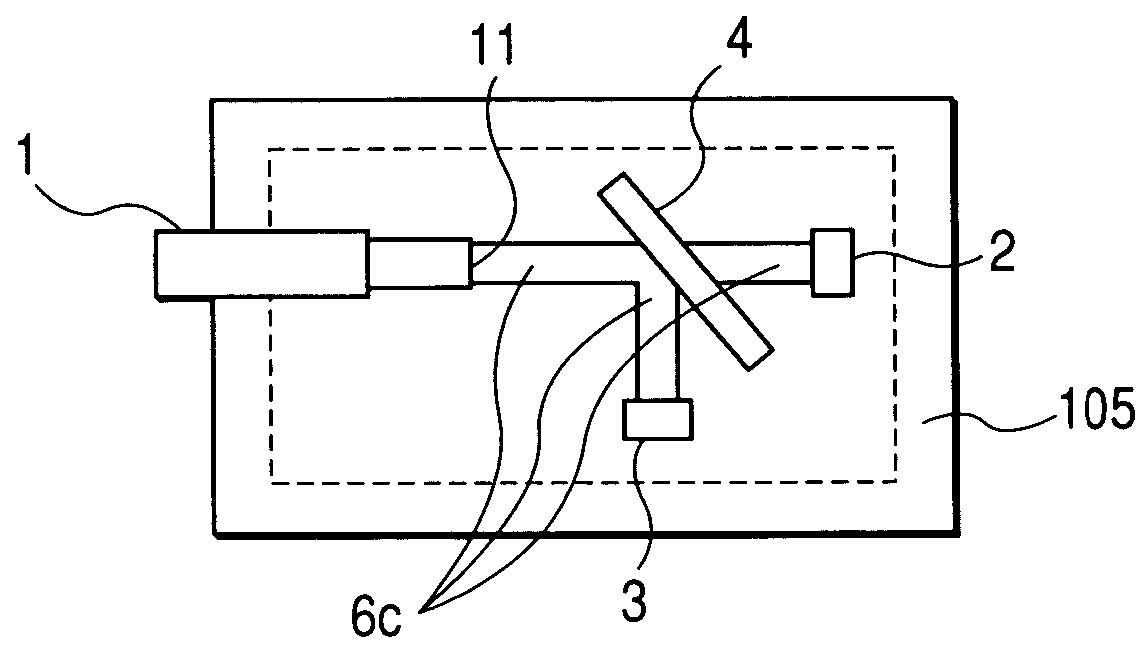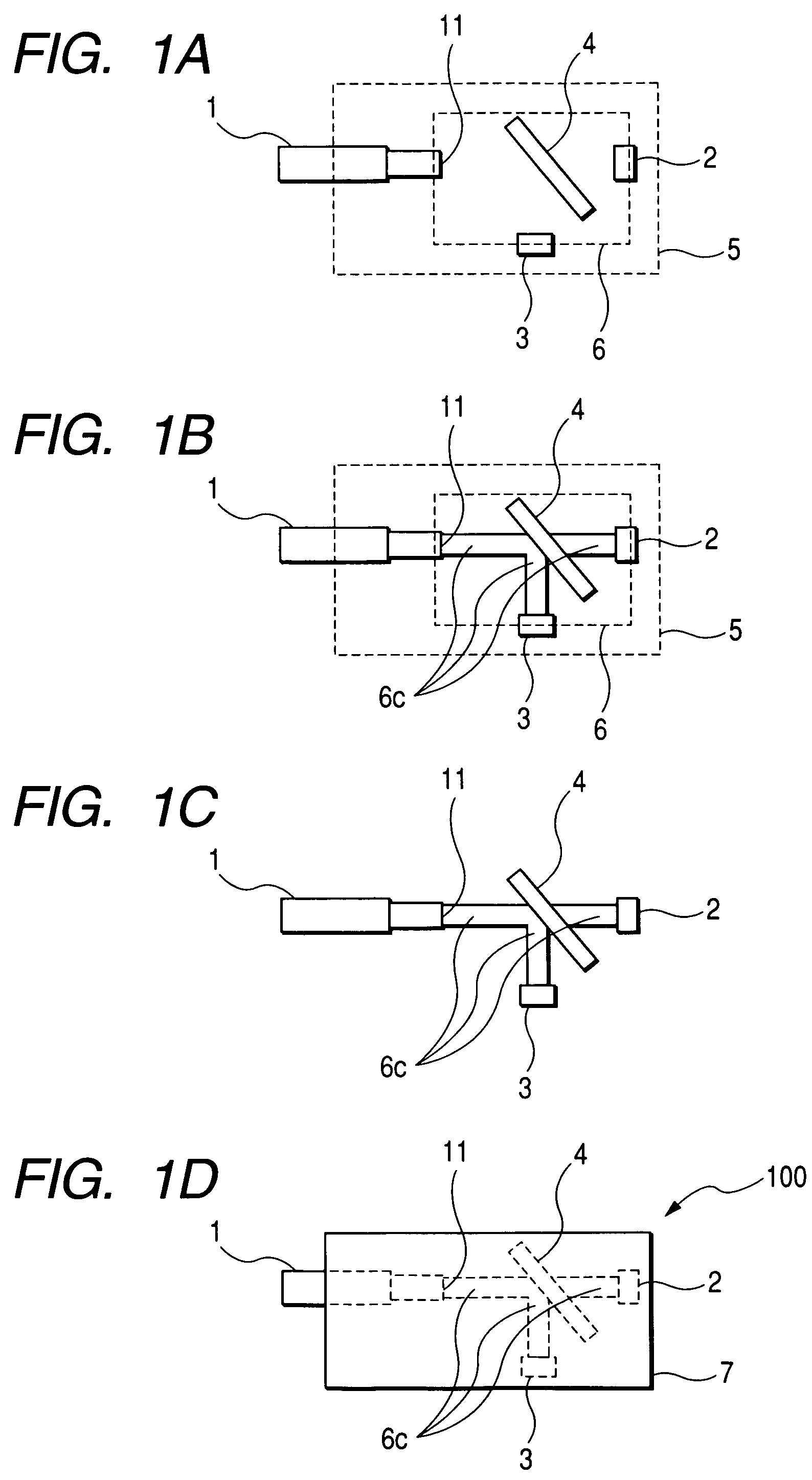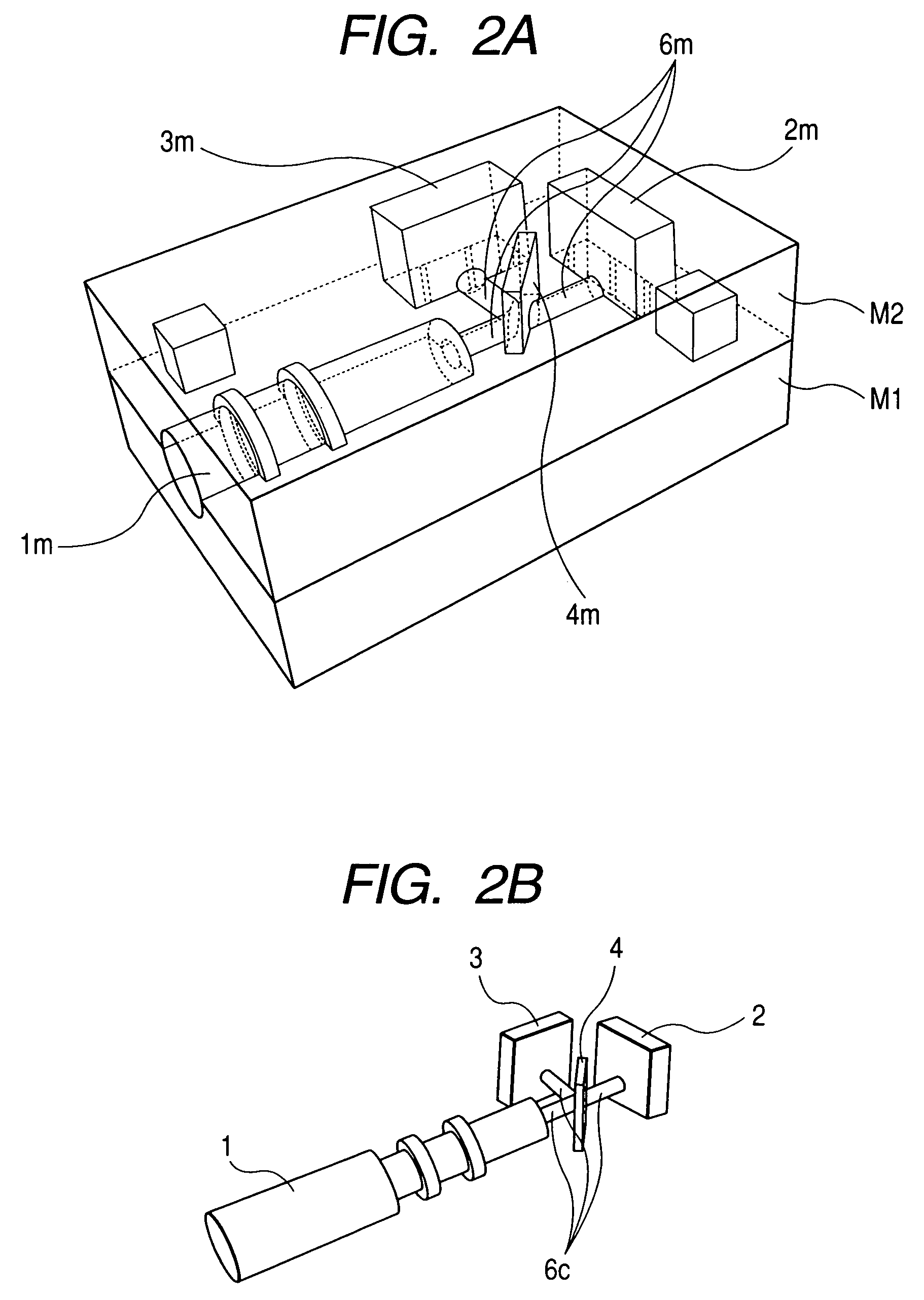Method of manufacturing an optical module
a manufacturing method and optical module technology, applied in the field of optical modules, to achieve the effect of simplifying the process, reducing the cost, and simplifying the process
- Summary
- Abstract
- Description
- Claims
- Application Information
AI Technical Summary
Benefits of technology
Problems solved by technology
Method used
Image
Examples
first embodiment
[0030]FIGS. 1A to 1D are process diagrams showing in conceptual form a manufacturing method according to a first embodiment of the invention. First, a POF 1, a green PD (light receiving device) 2, a red LED (light emitting device) 3, and a wavelength selective mirror 4 are prepared. The method uses the wavelength selective mirror 4 that reflects red light and transmits green light. These optical components are disposed on a fixing member 5 to which are fixed a core end face 11 of the POF 1, a light receiving surface of the light receiving device 2, a light emitting surface of the light emitting device 3, and a reflective surface of the wavelength selective mirror 4, and from which the optical components are detachable. The fixing member 5 is configured such that a light curable resin solution 6 to provide a core can be disposed thereon between the core end face 11 of the POF 1 and the lower left surface of the wavelength selective mirror 4, between the upper right surface of the wav...
second embodiment
[0040]FIGS. 5A to 5D are process diagrams showing in conceptual form a manufacturing method according to a second embodiment of the invention. First, a POF 1, a green PD 2, a red LED 3, and a wavelength selective mirror 4 are prepared. The method uses the wavelength selective mirror 4 that reflects red light and transmits green light. The individual components are arranged within a mold 105 in such a way that the core end face 11 of the POF 1 is fixed by the mold 105, and that the light receiving face of the light receiving device 2, the light emitting face of the light emitting device 3 and the reflective surface of the wavelength-selective mirror 4 are temporarily fixed by jigs not shown. By the way, whereas FIG. 4 depicts side views showing the process in a horizontal direction, the respective views of FIG. 5 are side views showing the process from above. Within the mold 105 indicated by a broken line in FIG. 5, a curable resin liquid 6 to become a core could be arranged. Inciden...
PUM
| Property | Measurement | Unit |
|---|---|---|
| core diameter | aaaaa | aaaaa |
| wavelength | aaaaa | aaaaa |
| refractive index | aaaaa | aaaaa |
Abstract
Description
Claims
Application Information
 Login to View More
Login to View More - R&D
- Intellectual Property
- Life Sciences
- Materials
- Tech Scout
- Unparalleled Data Quality
- Higher Quality Content
- 60% Fewer Hallucinations
Browse by: Latest US Patents, China's latest patents, Technical Efficacy Thesaurus, Application Domain, Technology Topic, Popular Technical Reports.
© 2025 PatSnap. All rights reserved.Legal|Privacy policy|Modern Slavery Act Transparency Statement|Sitemap|About US| Contact US: help@patsnap.com



